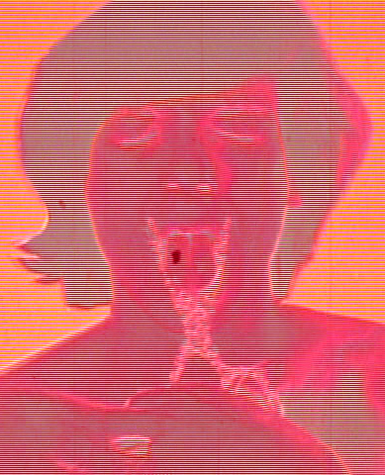Film Studies Center: Color Corrections
Color is the focus of this Film Studies Center program; or, more correctly, monochromatic color and the diverse ways that eleven different artists have used either a single color exclusively or various colors one at a time.
The always-playful Émile Cohl’s Le Peintre Neo-Impressioniste (1910) combines live action and his trademark animation to “illustrate” the single-hued subjects of a modernist painter. Yves Klein’s Bas Relief in a Forest of Sponges (1959) moves beyond simple documentation of one of his blue-dominant installation works. Joyce Wieland’s Hand Tinting (1967) transforms footage from a Jobs Corps documentary through her editing and the coloring of the footage through the titular process. Paul Sharits’ aggressive color field flicker film T, O, U, C, H, I, N, G (1968) intercuts single color frames and images of a man about to cut off his tongue. Hollis Frampton foregrounds yellow in his wry “still life” Lemon (1969), and dn rodowick answers with an orange in Pyramid (2016). Pierre Rovere’s cameraless structural film Red Light (1975) presents patterns of red, then blue, dots. Several recent artists continuing the creative exploration of monochromatic possibilities include Fred Worden (Plotting the Grey Scale: 2 or 3 Quick Traverses, 1986), Maida Barbour (Linda M. Montano’s Seven Years of Living Art, 1994), Jeanne Liotta (Loretta, 2003), and Simon Payne (New Ratio, 2007).
FREE, open to the public. Doors open a half-hour before the top of the show. Seating is limited and offered on a first come-first served basis unless otherwise noted. Please call for information or assistance.
Co-curated by Patrick Friel and Mike Phillips. (1910–2016, various countries, 76 min., digital video, 35mm, and 16mm)
Presented by the Film Studies Center in conjunction with the Smart Museum of Art’s exhibition Monochrome Multitudes.
Image: Still from Paul Sharits’ T, O, U, C, H, I, N, G (1968)
